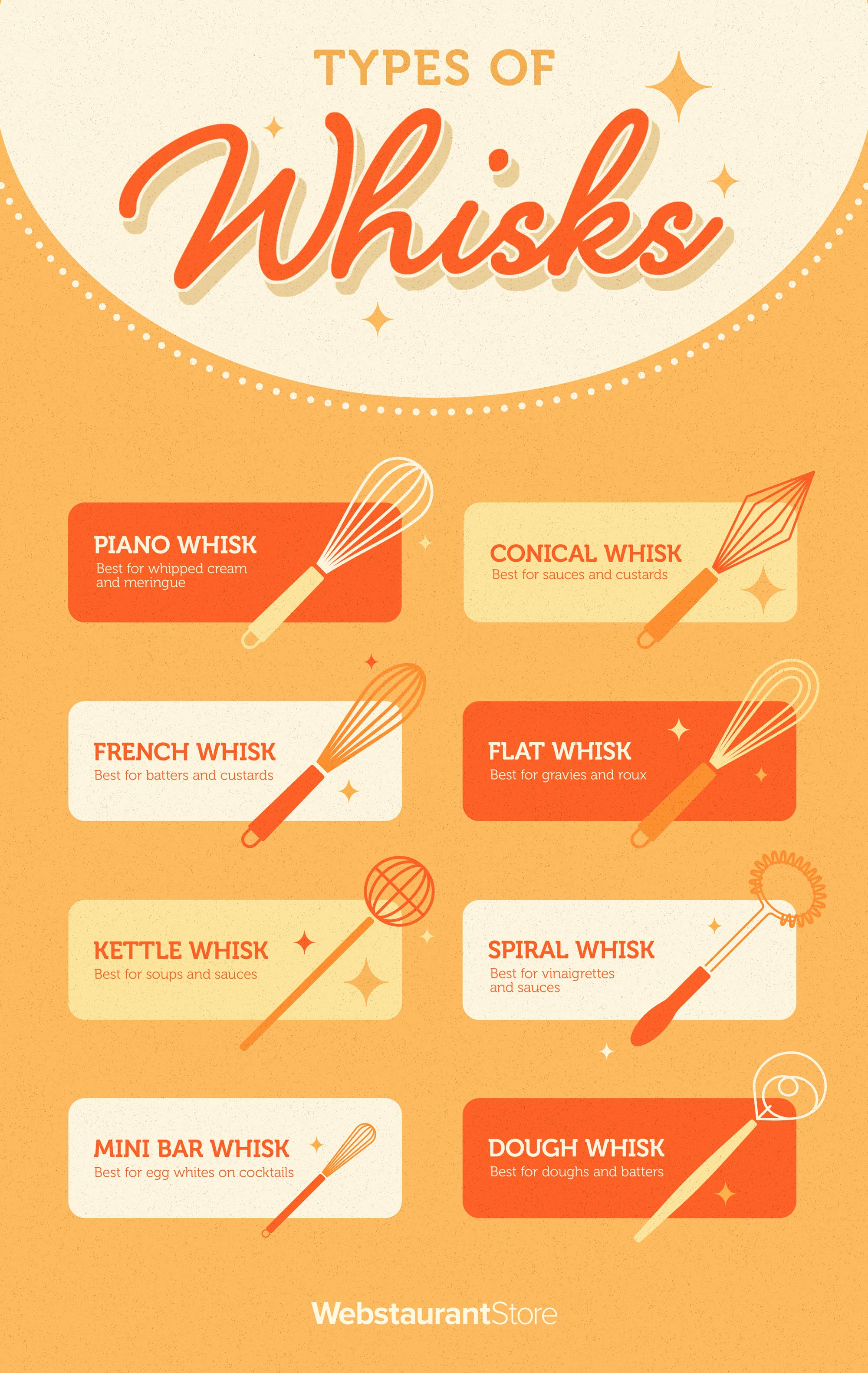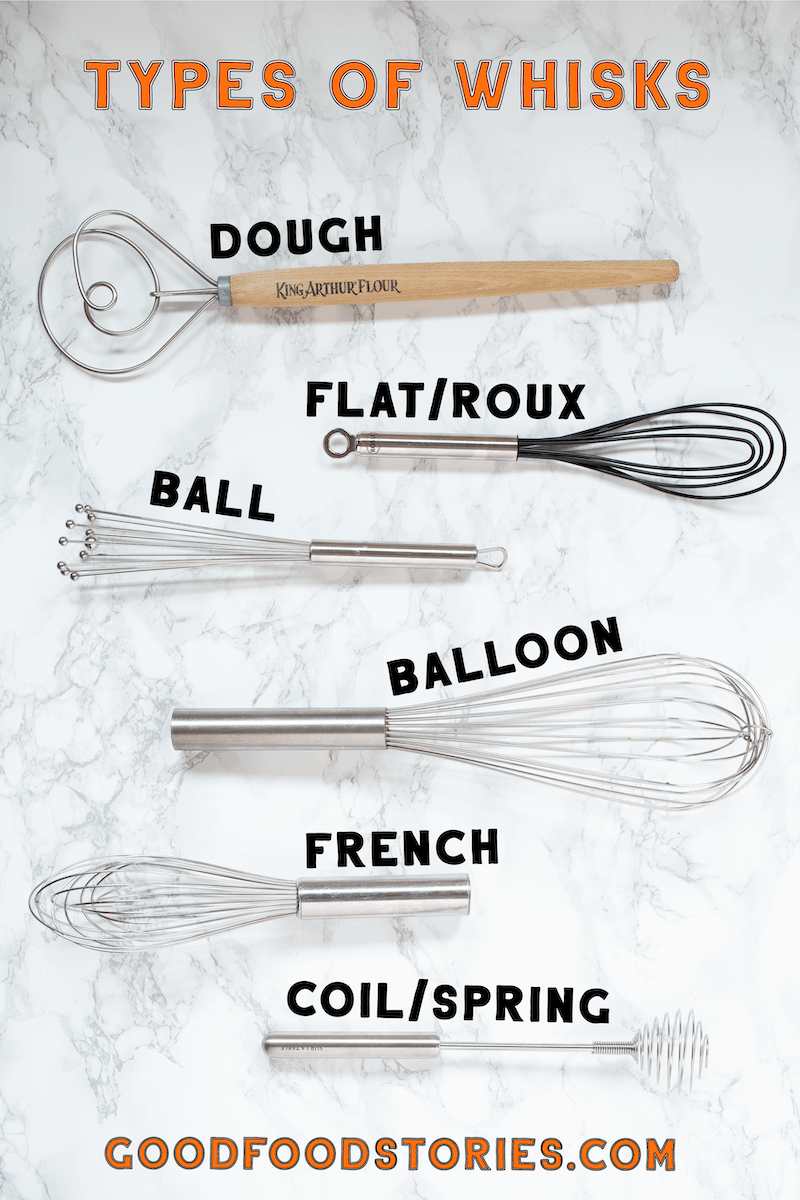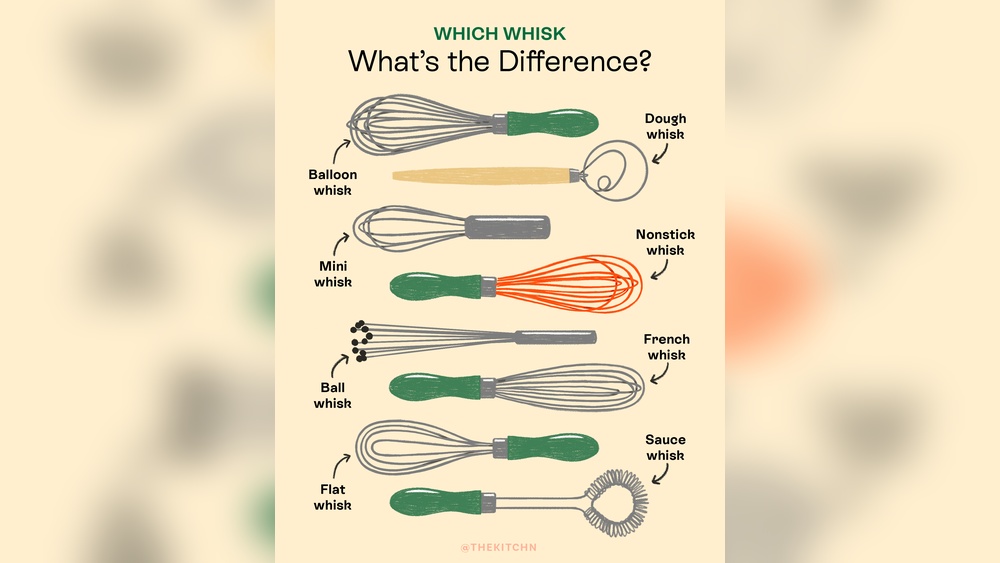When you’re in the kitchen, choosing the right tool can make all the difference in your cooking. You might think a whisk is just a whisk, but the truth is, balloon whisks and flat whisks each have unique roles that can change how your dishes turn out.
Are you struggling to get the perfect texture in your sauces or whipped cream? Or maybe your scrambled eggs never seem quite right? Understanding the difference between these two whisks can save you time and effort, and help you achieve better results every time.
Keep reading to discover which whisk fits your cooking style and how to use each one to its full potential.

Credit: www.youtube.com
Balloon Whisk Design
The balloon whisk has a unique design that makes it perfect for whipping and mixing. Its shape helps add air into ingredients quickly. This tool is essential for light, fluffy mixtures like whipped cream or egg whites.
The design also makes stirring easier in bowls, not just pans. The balloon whisk’s form allows it to move freely, reaching all parts of the bowl. This leads to better mixing and faster results.
Wire Loops And Shape
The balloon whisk features many thin wire loops. These loops form a bulbous, round shape. This shape creates more space for air to flow through the ingredients.
The wires are flexible but strong. They bend slightly to mix well without damaging the bowl. The round design helps trap air, making mixtures light and airy.
Materials And Sizes
Balloon whisks are mostly made from stainless steel wires. This material resists rust and is easy to clean. Some have silicone-coated wires for use in non-stick pans.
Sizes vary from small handheld whisks to large ones for big batches. Choose a size based on your cooking needs. Smaller whisks work well for sauces, while larger ones handle bigger volumes.
Flat Whisk Design
The flat whisk has a unique shape that suits specific kitchen tasks. Its wires spread out flat and sit close to the pan’s surface. This design helps to scrape the bottom of pans easily. It works well with shallow pans and skillets. The flat whisk blends sauces, gravies, and custards smoothly. It also helps to stir eggs evenly without leaving lumps.
Wire Arrangement
The wires of a flat whisk are arranged in a splayed pattern. They spread out wide and stay flat against the pan. This layout allows the whisk to reach every corner of the pan. The wires do not form a cage like balloon whisks. Instead, they glide along the surface to mix and scrape. This makes it easier to prevent food from sticking or burning. The open wire design also lets the ingredients move smoothly.
Materials And Sizes
Flat whisks come in various materials, such as stainless steel and silicone. Stainless steel wires are strong and easy to clean. Silicone-coated wires protect non-stick pans from scratches. Sizes range from small whisks for delicate tasks to larger ones for big pans. Choose the size based on the pan you use most. A good flat whisk balances flexibility and firmness. This helps with both gentle stirring and firm scraping.
Primary Uses Of Balloon Whisks
Balloon whisks have a distinct shape that makes them perfect for specific kitchen tasks. Their rounded, cage-like design allows them to work well with ingredients that need air. This makes balloon whisks essential for many baking and cooking processes. They help create light, fluffy textures in food. Below are some primary uses of balloon whisks.
Aerating Egg Whites And Cream
Balloon whisks are excellent for whipping egg whites to stiff peaks. Their wide loops trap air efficiently, making egg whites fluffy and stable. They also work well for whipping cream into soft or firm peaks. This aeration adds volume and lightness to desserts and sauces. Using a balloon whisk speeds up this process compared to other tools.
Mixing Batters And Dry Ingredients
The rounded shape of balloon whisks helps mix batters evenly without overworking them. They combine dry ingredients smoothly into wet mixtures, preventing lumps. This is useful for pancake, cake, and waffle batters. Balloon whisks also gently blend ingredients without crushing delicate components. Their flexibility suits many mixing tasks in the kitchen.
Primary Uses Of Flat Whisks
The flat whisk is a versatile tool for many cooking tasks. Its shape helps it work well in shallow pans. The wires are spread out and lie close to the pan’s bottom. This design makes it perfect for stirring and mixing without missing any spots. It helps blend ingredients smoothly and scrape the pan clean. Many chefs prefer flat whisks for tasks that need gentle yet thorough stirring.
Blending Sauces And Gravies
Flat whisks are great for mixing sauces and gravies. They reach the pan’s bottom and sides easily. This stops lumps from forming and keeps the sauce smooth. The flat design helps break up clumps quickly. It also prevents burning by moving the sauce constantly. This whisk works best with roux, gravy, and other thick sauces. It blends the ingredients evenly and improves the sauce’s texture.
Scraping Shallow Pans
Scraping food from shallow pans is simple with a flat whisk. The wires slide under bits of food stuck on the pan. This helps loosen and lift food without scratching the surface. It is useful for deglazing pans after cooking meat or vegetables. The flat whisk collects flavor bits and mixes them into the sauce. This adds taste and richness to dishes. It also makes cleaning easier by freeing stuck food.
When To Choose Balloon Whisks
Choosing the right whisk makes a big difference in cooking and baking. Balloon whisks have a rounded shape with many wires. This design helps add air and volume to mixtures. They work best in bowls, not pans. Knowing when to use a balloon whisk can improve your recipes.
Creating Volume And Air
Balloon whisks trap air as you move them quickly. This adds lightness to mixtures like whipped cream and egg whites. The wide shape lets you whisk more ingredients at once. Use a balloon whisk when you want a fluffy texture. It helps mix ingredients evenly while adding air.
Whipping To Stiff Peaks
Balloon whisks are perfect for whipping egg whites or cream to stiff peaks. Their shape helps build strong bubbles that hold their form. Stiff peaks mean the mixture stands up straight without falling over. This is important for recipes like meringues or mousse. Balloon whisks make whipping easier and faster.
When To Choose Flat Whisks
Choosing the right whisk can improve your cooking and make tasks easier. Flat whisks work best in specific situations. Their shape allows them to reach the edges and bottom of shallow pans. This makes stirring and blending smoother and more efficient. Knowing when to use a flat whisk helps you get better results in the kitchen.
Frequent Stirring In Shallow Pans
Flat whisks have wires that spread out flat. This design helps scrape the bottom of pans well. It prevents food from sticking or burning during cooking. Using a flat whisk lets you stir sauces, gravies, and roux often without lifting the pan. It reaches corners better than balloon whisks. This helps blend ingredients evenly and quickly.
Making Custards And Scrambled Eggs
Flat whisks are perfect for gentle mixing in shallow pans. They help cook custards smoothly by stirring constantly. The flat shape moves through the mixture easily, stopping lumps. When making scrambled eggs, flat whisks break up eggs well. They mix eggs evenly, creating soft, fluffy textures. This whisk gives good control to avoid overcooking or curdling.
Comparing Performance
Understanding the performance differences between balloon whisks and flat whisks helps choose the right tool. Each whisk has a unique design that suits specific kitchen tasks. Their shapes affect how well they mix, aerate, or scrape ingredients.
Efficiency In Aeration
Balloon whisks excel at aerating. Their rounded shape traps air easily. They create light, fluffy textures in egg whites and whipped cream. The wide loops increase air incorporation quickly.
Flat whisks do not aerate as well. Their design lies flat against pans and does not trap much air. They work best for gentle mixing rather than whipping or foaming.
Effectiveness In Scraping
Flat whisks are ideal for scraping. Their flat wires reach the bottom of shallow pans. This design helps lift sauces and gravies without leaving residue behind.
Balloon whisks struggle to scrape well. Their curved shape leaves some areas untouched. They are less effective at stirring thick or sticky mixtures in pans.

Credit: www.webstaurantstore.com
Tips For Using Whisks Properly
Using whisks properly improves your cooking results. Knowing how to handle balloon and flat whisks helps you prepare recipes with ease. Simple tips can make whisking more effective and enjoyable. These tips include choosing the right whisk and keeping it clean. Proper use also extends the life of your whisk.
Matching Whisk To Recipe
Choose a balloon whisk for whipping cream or egg whites. Its round shape adds air quickly. Use a flat whisk for sauces or gravies in shallow pans. It scrapes the pan bottom well and blends smoothly. Match the whisk to the task for best results.
Cleaning And Maintenance
Clean your whisk right after use to prevent food from drying. Use warm water and soap to remove oils and residues. Avoid soaking metal whisks too long to prevent rust. Dry them completely before storing. Check for bent wires and replace if damaged. Proper care keeps your whisk ready for any recipe.
Other Whisk Types To Consider
Besides balloon and flat whisks, several other whisk types serve unique kitchen roles. Each offers specific benefits for different cooking and baking tasks. Understanding these helps improve your cooking results.
These whisk types are less common but worth considering for specialized uses. They can make mixing, blending, and whipping easier and more efficient.
Ball Whisks
Ball whisks have small metal balls at the end of each wire. These balls help reach corners of pots and pans better. They work well for thick sauces and gravies, mixing ingredients smoothly. Their design minimizes splashing and helps break lumps quickly.
French Whisks
French whisks feature long, narrow loops that taper to a point. They are excellent for stirring sauces and light batters. Their shape allows quick mixing in deep pans and bowls. They are perfect for gentle folding and blending tasks.
Coil Whisks
Coil whisks have a spring-like coil at the end of the handle. This coil works well for beating eggs and mixing dressings. It fits well inside narrow containers, making it handy for small jobs. Coil whisks provide good control and fast mixing action.

Credit: www.goodfoodstories.com
Frequently Asked Questions
Should I Get A Flat Or Balloon Whisk?
Choose a flat whisk for blending sauces and scraping shallow pans. Pick a balloon whisk to whip air into egg whites or cream.
Why Use A Balloon Whisk?
Use a balloon whisk to quickly incorporate air into mixtures like egg whites or cream. Its rounded shape whips efficiently, creating light, fluffy textures.
What Is The Point Of A Flat Whisk?
A flat whisk blends and scrapes sauces or gravies in shallow pans. It stirs custards and scrambled eggs evenly.
What Is The Difference Between A Balloon Whisk And A French Whisk?
A balloon whisk has a rounded shape with many loops for aerating ingredients. A French whisk is slimmer, ideal for mixing and stirring in deeper pans.
Conclusion
Choosing between balloon and flat whisks depends on your cooking needs. Balloon whisks add air and create fluffy textures. Flat whisks scrape pans and blend sauces smoothly. Each whisk has a unique shape for specific tasks. Use the right whisk to make cooking easier and better.
Simple tools, big difference in your kitchen work. Keep both handy for versatile cooking results.

